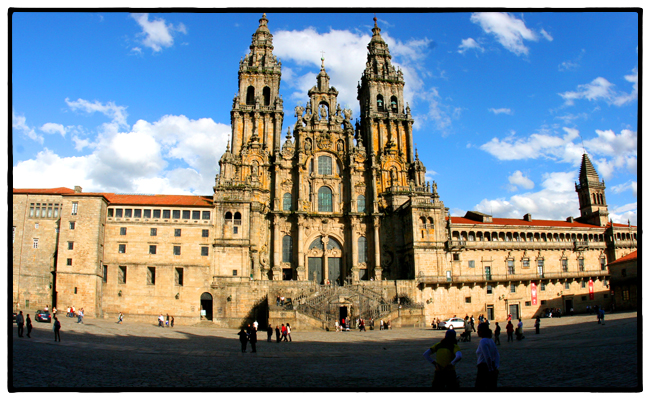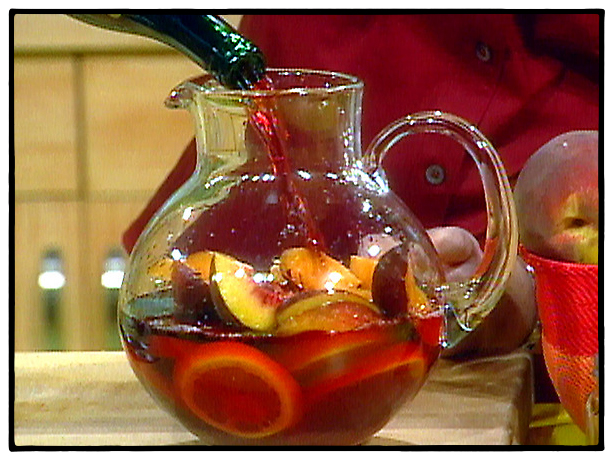
The cathedral built over the supposed grave of St. James discovered by a religious hermit 769 years after he'd died. Photo by David Lansing.
Santiago de Compostela is a beautiful city. The Catedral del Apóstol is magnificent. But the whole reason for why this city is here is a joke. It doesn’t speak of man’s faith in The Big Kahuna. It speaks of man’s incredible gullibility. It makes me want to pull my hair out and run around screaming What’s wrong with you people?
Here’s the fairytale: In A.D. 44, King Herod had the apostle, James, beheaded in Jerusalem. Ouch. His body was put in a stone boat (of course) and sailed to Padrón (why not?), way up in the northwest corner of Spain.
Now, if you flew from Jerusalem to Padrón today, you’d get 2,500 frequent flier miles. But that’s as the crow flies, crossing over northern Spain from Barcelona almost to Portugal. If you were going to go by sea, you’d have to follow the northern coast of Africa, through the Straits of Gibraltor, and then up the coast of Portugal. Maybe adding 600 or 700 hundred miles to the trip. In a stone boat. In 44 A.D.
Never mind. You did it. It wasn’t easy, but what the hell. You got that corpse (which is probably a little ripe after godknows how many months upon the sea) to Northern Spain. Now you find a cart and you drag that coffin another 20 klicks or so inland and bury it in an unmarked grave. Where it rots for the next 769 years. Until a religious hermit (what we now call a “homeless crazy person”) claims that he’s rediscovered the grave. Hip-hip-hooray! Send a letter to King Alfonso II. Who actually shows up and says, What the hell—let’s build a big, honkin’ cathedral where the loony guy says St. James is buried. Why not? There’s nothing else here. Maybe it will be good for tourism.
Which it is. Dozens stop by. Thousands. Tens of thousands. It becomes the Disneyland of Europe back in the Middle Ages.
Meanwhile, these nasty Moors have been messing with things. Good Christians are getting pissed off (sound familiar?). For a good 400 years, Christians and Muslims and Jews throw things at each other and slit each other’s throats. Finally, in 1482, the Christians decide that what they need is a good ol’ fashioned Holy War. And if you’re going to have a good ol’ fashion Holy War, you need some sort of a war cry. I know! How about, “Santiago de Compostela!” in honor of the apostle who mysteriously floated back to Spain in a stone boat? Perfect! Yell your war cry and then stick a sword in a Muslim!
By 1492, it’s all over. The Moors plead uncle. All the Jews are kicked out of Spain (or worse). The Moors are given three choices: Convert to Christianity; leave Spain; or die. (Actually, sometimes the choices are combined. For instance, it’s not at all unusual over the next 150 years or so for a Moor to convert to Christianity and then be put to death.)
Lots of people die. How many? Too many to count (besides, nobody cared about body counts back in the Middle Ages). What’s important is that by praying to St. James, the Spanish have been able to slaughter the Jews and Moors and get them the hell out of Spain. Hip-hip-hooray. Let’s go there and say a prayer!
And that’s how Santiago de Compostela became famous.
And people say religion is ridiculous…pshawww!







Recent Comments